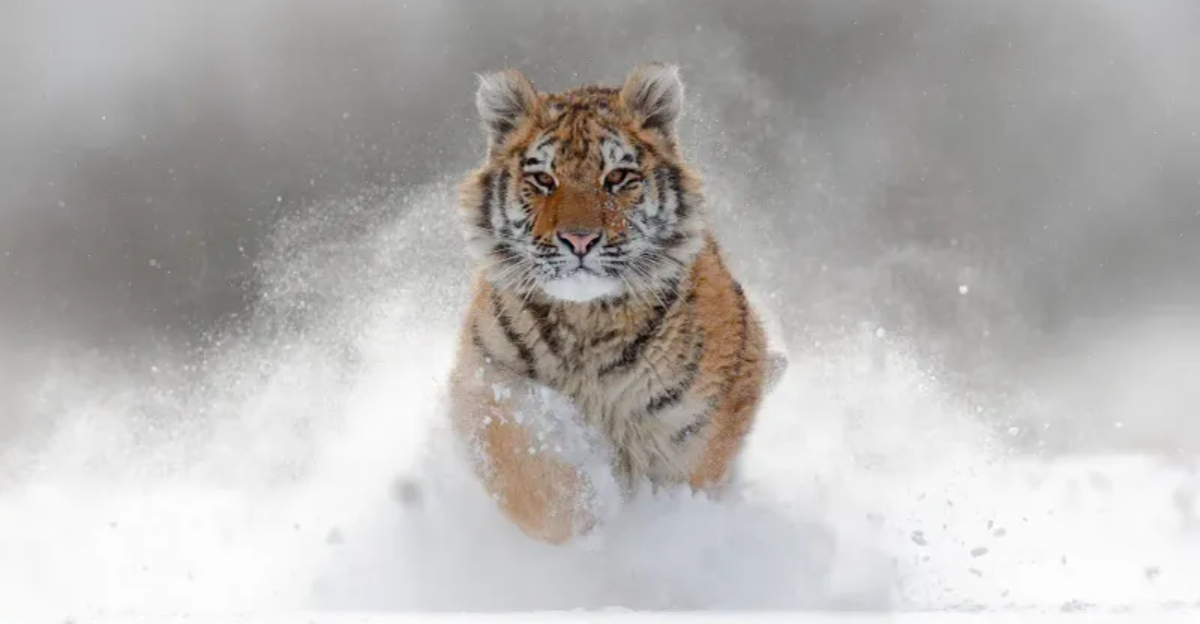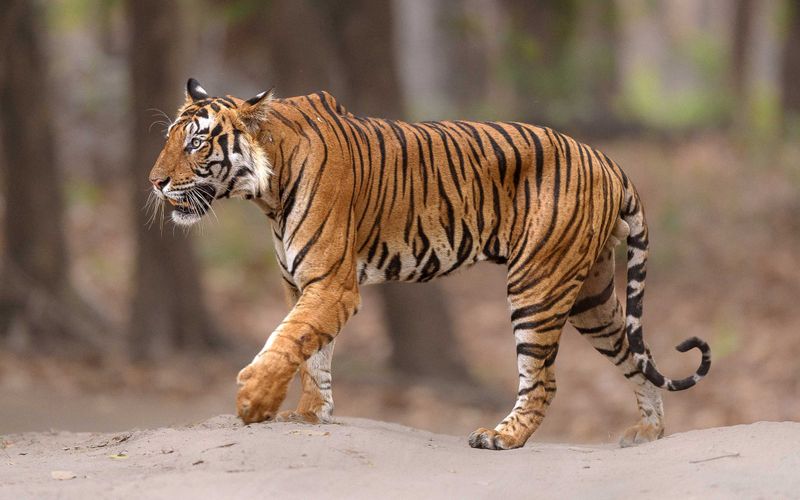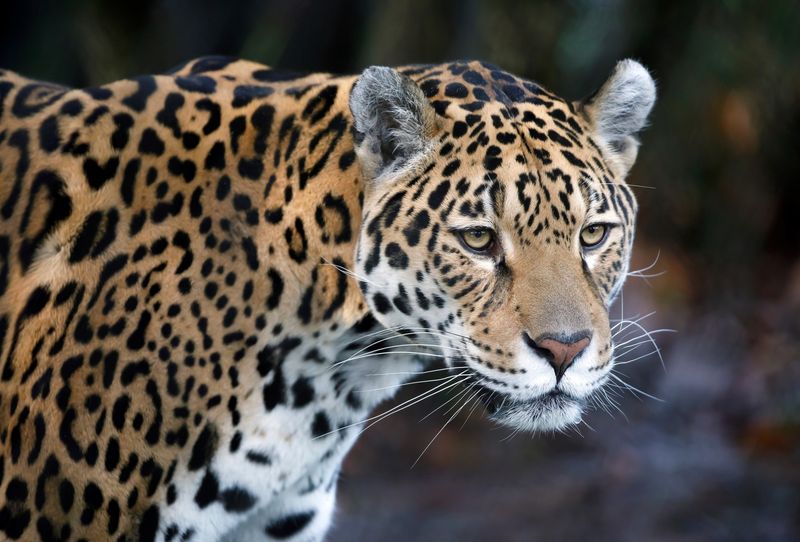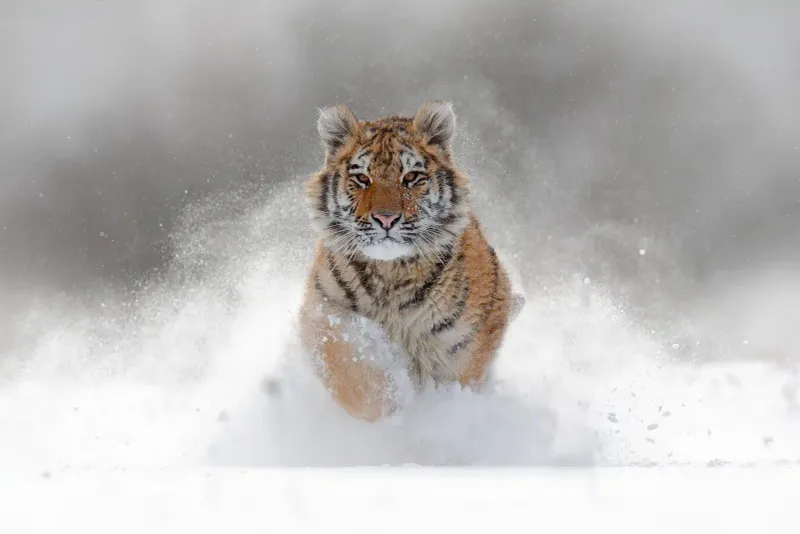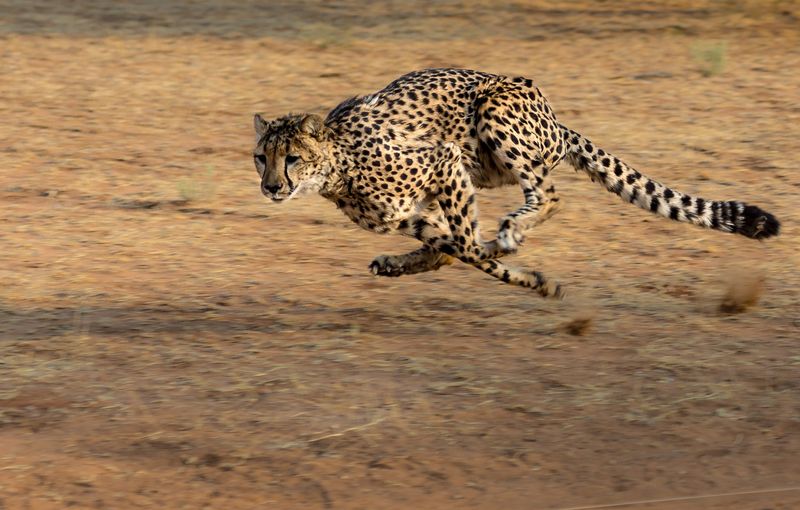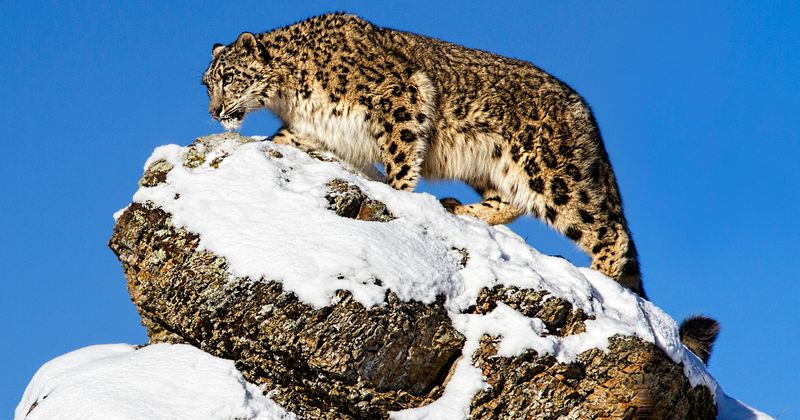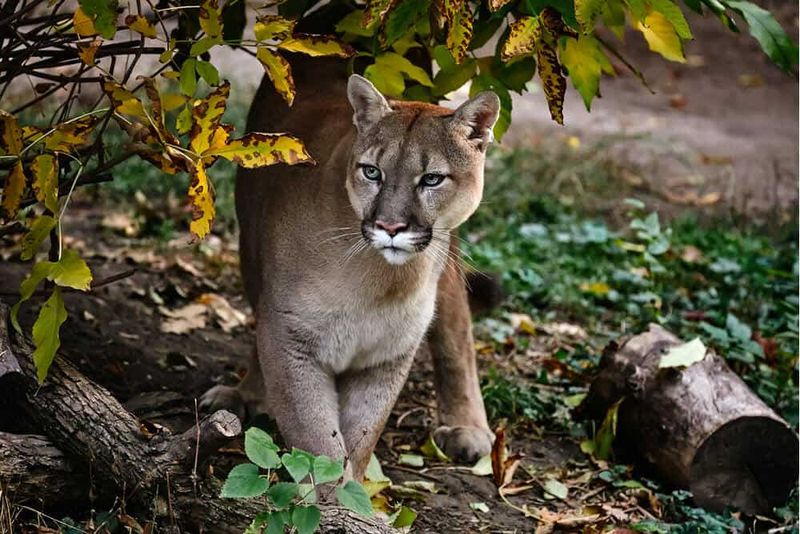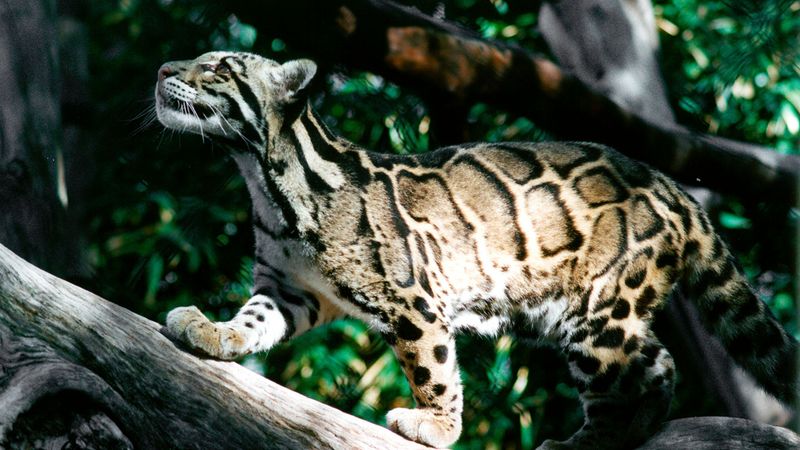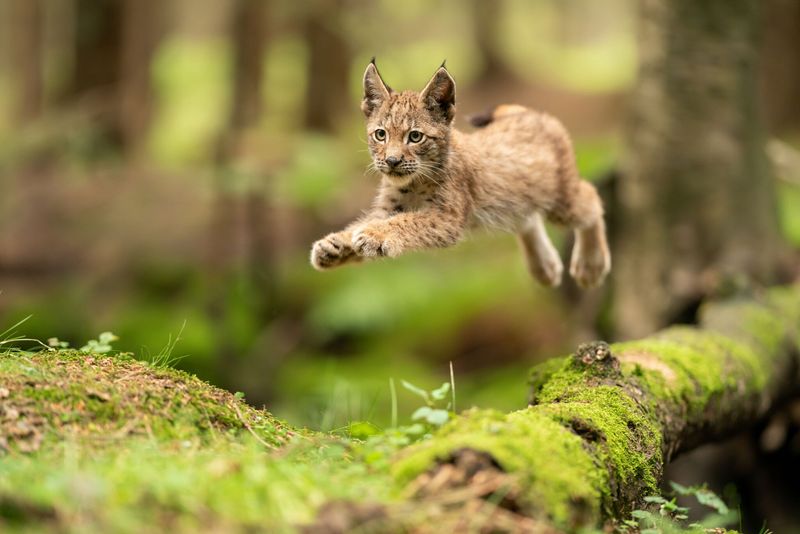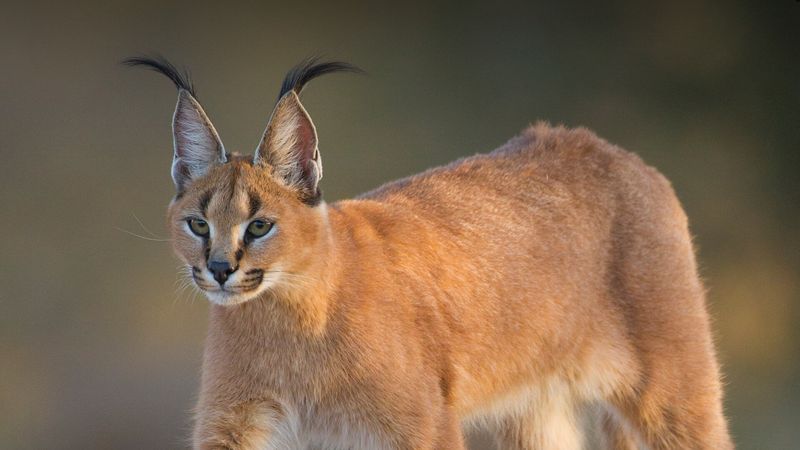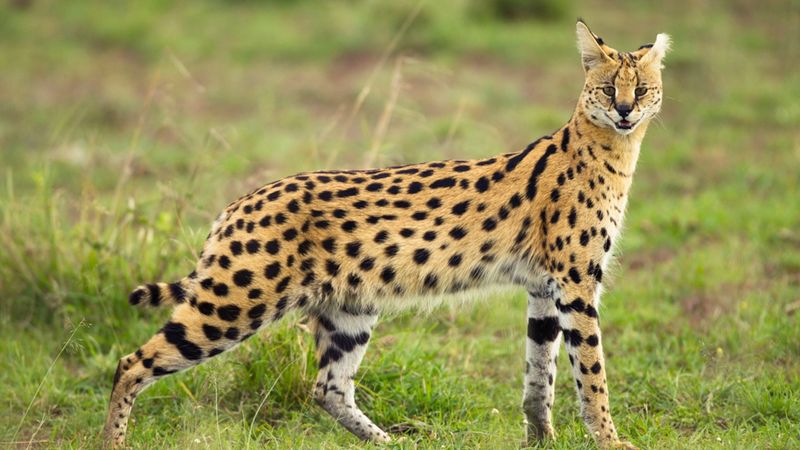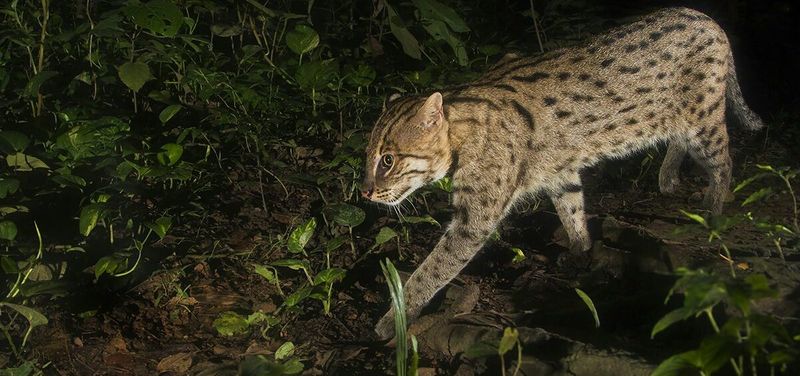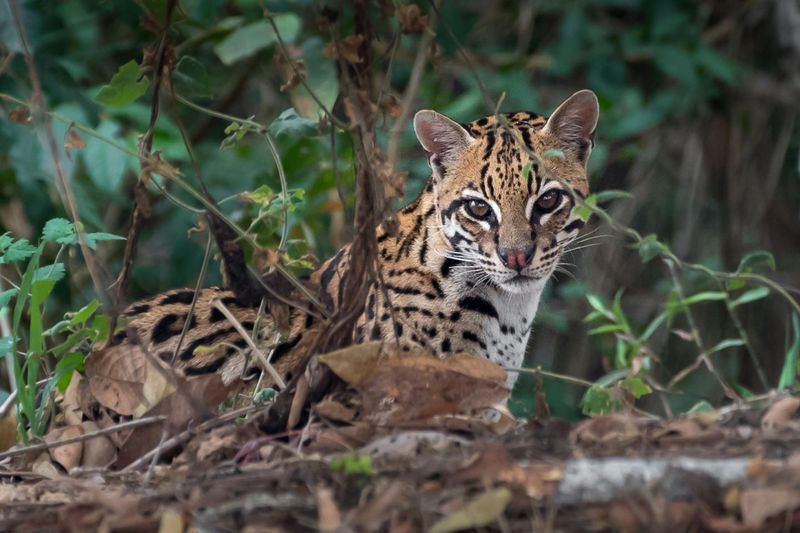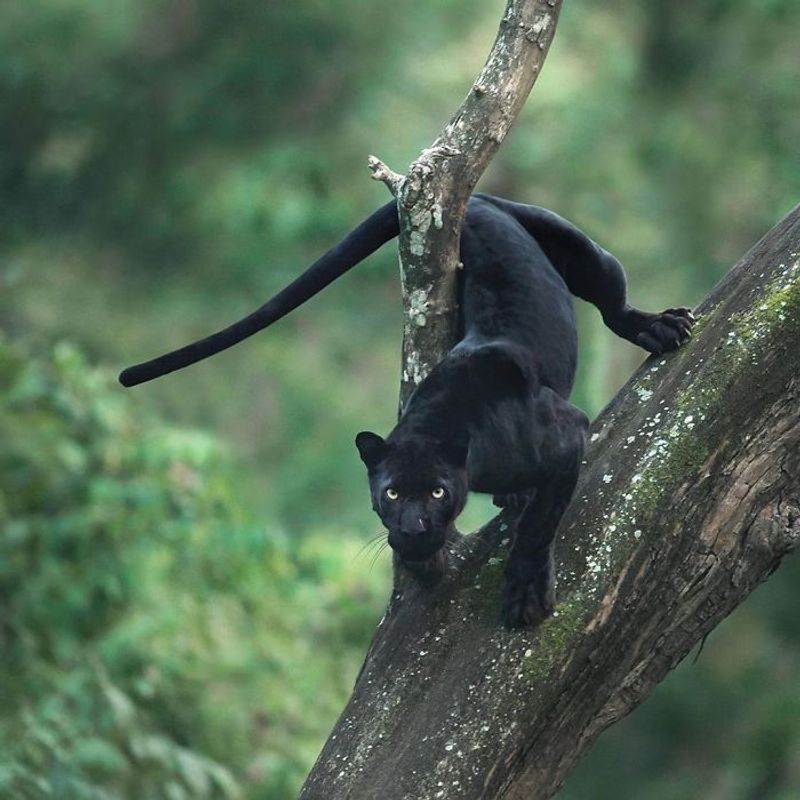📖 Table of Content:
Big cats are among the most formidable predators in the wild, each species possessing unique traits and adaptations that make them fiercely effective hunters. From the dense jungles to the open savannas, these majestic creatures reign supreme. This article explores the top 15 most dangerous big cats, highlighting their characteristics, habitats, and hunting prowess. Each cat has a story to tell, showcasing the wild beauty and raw power that make them masters of their domain. Let’s uncover the mysteries and marvels of these incredible predators.
1. Bengal Tiger
Known for their striking orange coat and black stripes, Bengal tigers are the quintessential big cats of the Indian subcontinent. They are solitary creatures, preferring to roam the dense forests and grasslands alone. Their powerful build and razor-sharp teeth make them formidable hunters, capable of taking down prey much larger than themselves.
With acute senses and stealthy movements, they silently stalk their prey before launching a powerful attack. Despite their fearsome reputation, these tigers face threats from habitat loss and poaching. Conservation efforts are crucial to ensuring their survival in the wild.
2. African Lion
Often referred to as the “king of the jungle,” African lions are the only big cats to live in social groups known as prides. These groups are essential for their survival, allowing them to hunt cooperatively and protect their territory. Their majestic manes and powerful roars are iconic symbols of strength and dominance.
Lions are apex predators, preying on large herbivores like zebras and wildebeests. Unfortunately, human encroachment and conflicts pose significant threats to their populations. Efforts to protect their natural habitats are vital for the future of these regal beasts.
3. Jaguar
The apex predators of the Americas, known for their incredible strength and unique spotted coat. These solitary hunters are most at home in the rainforests, where they excel at ambushing prey. With a bite force unmatched by any other big cat, they can crush the skulls or shells of their prey with ease.
They are adept swimmers and often hunt along waterways, showcasing their versatility as hunters. Jaguars face threats from habitat destruction and poaching, making conservation efforts critical to their survival. Their presence is a testament to the rich biodiversity of their habitat.
4. Siberian Tiger
Siberian tigers, also known as Amur tigers, are the largest of all big cat species, adapted to the frigid temperatures of the Russian wilderness. Their thick fur and muscular build equip them for survival in harsh conditions. These solitary predators rely on stealth and power, stalking prey through dense forests before launching a surprise attack.
Their diet mainly consists of deer and wild boar, which they expertly capture with precision. Poaching and habitat loss have severely threatened their numbers, necessitating urgent conservation efforts to protect this magnificent species.
5. Leopard
Leopards are known for their incredible adaptability, thriving in various habitats from savannas to rainforests. Their rosette-patterned coats provide perfect camouflage, allowing them to remain undetected as they stalk prey. These solitary cats are agile climbers, often dragging their kills into trees to protect them from scavengers.
Leopards hunt a wide range of prey, showcasing their opportunistic nature. Despite their adaptability, they face threats from habitat loss and poaching. Conservation efforts aim to preserve their habitats and ensure their survival in the wild.
6. Cheetah
Renowned as the fastest land animal, cheetahs are built for speed. Their slender bodies and long legs allow them to accelerate from 0 to 60 mph in just a few seconds. Unlike other big cats, they rely on speed rather than stealth to catch their prey.
Cheetahs primarily hunt during the day, using their keen eyesight to spot potential targets. Despite their remarkable speed, cheetahs face threats from habitat fragmentation and competition with larger predators. Conservation initiatives focus on preserving open landscapes and supporting their survival in the wild.
7. Snow Leopard
Snow leopards are the elusive ghosts of the mountains, perfectly adapted to the rugged terrains of Central Asia. Their thick, grayish fur and long, bushy tails provide insulation against the cold. These solitary hunters are known for their incredible agility, leaping up to 50 feet in pursuit of prey.
Snow leopards primarily hunt wild sheep and goats, relying on their stealth and precision. Their populations are threatened by habitat loss and poaching, making conservation efforts vital. These magnificent cats symbolize the untamed beauty of the high-altitude wilderness.
8. Puma
Pumas, also known as cougars or mountain lions, are versatile predators found throughout the Americas. Their tawny coats and powerful bodies make them adept hunters in diverse habitats, from forests to deserts. These solitary cats are known for their stealth and agility, often ambushing prey with precision and speed.
Pumas have a varied diet, feeding on deer, rodents, and occasionally livestock. Human-wildlife conflicts pose significant threats to their populations. Conservation efforts aim to mitigate these conflicts and protect their natural habitats.
9. Clouded Leopard
Named for their unique coat patterns, resembling clouds. These elusive cats inhabit the rainforests of Southeast Asia and are known for their exceptional climbing abilities. Their long canine teeth and powerful jaws enable them to take down prey much larger than themselves.
Despite their prowess, they face threats from habitat destruction and poaching. Conservation efforts focus on preserving their rainforest habitats and promoting coexistence with local communities. Clouded leopards are emblematic of the diverse and rich ecosystems they inhabit.
10. Eurasian Lynx
Eurasian lynxes are among the most widespread wild cats, found across Europe and northern Asia. Their tufted ears and short tails are distinctive features of these solitary hunters. Lynxes are masters of stealth, relying on their acute senses to locate prey in dense forests.
They primarily hunt small mammals like hares and birds, using their powerful limbs to pounce with precision. Despite their adaptability, lynxes face threats from habitat loss and hunting. Conservation efforts aim to restore their populations and ensure their continued presence in their natural habitats.
11. Caracal
Known for their distinctive tufted ears and remarkable jumping abilities. These medium-sized cats inhabit the savannas and arid regions of Africa and the Middle East. Their reddish coats help them blend with the arid landscapes, providing excellent camouflage.
Caracals are expert hunters, capable of catching birds mid-flight with their powerful leaps. Despite their adaptability, they face threats from habitat loss and hunting. Conservation initiatives focus on protecting their natural habitats and promoting coexistence with human populations.
12. Serval
Servals are distinguished by their long legs and large ears, perfectly adapted for life in the African savanna. These slender cats are skilled hunters, relying on their keen hearing to detect prey hiding in the grass. Their long limbs allow them to leap high and cover great distances effortlessly.
Servals primarily hunt small mammals and birds, using their agility and speed to capture their targets. Habitat loss and hunting present significant threats to their populations. Conservation efforts aim to protect their natural habitats and ensure their survival in the wild.
13. Fishing Cat
Unique among big cats for their affinity with water. These medium-sized felines inhabit the wetlands of South and Southeast Asia, perfectly adapted for a semi-aquatic lifestyle. Their water-resistant fur and webbed feet enable them to be efficient hunters in aquatic environments.
Fishing cats primarily prey on fish and other aquatic creatures, showcasing their specialized hunting skills. Habitat destruction and pollution are significant threats to their populations. Conservation efforts focus on preserving wetland ecosystems and promoting awareness of their ecological importance.
14. Ocelot
Small wild cats with striking spotted coats, native to the rainforests of Central and South America. Their distinctive patterns provide ideal camouflage, allowing them to move silently through their lush habitats. These solitary hunters are nocturnal, relying on their keen senses to locate prey.
Ocelots primarily hunt small mammals and birds, showcasing their adaptability as hunters. They face threats from habitat loss and the illegal pet trade. Conservation efforts aim to protect their natural environments and curb illegal activities threatening their survival.
15. Black Panther
Black panthers are not a distinct species but a color variant of leopards or jaguars with melanism, giving them their dark, sleek appearance. These enigmatic big cats are often shrouded in mystery due to their elusive nature. Black panthers thrive in dense forests, where their dark coats provide excellent camouflage in the shadows.
They are solitary hunters, relying on stealth and power to capture prey. Myths and legends often surround these majestic creatures, making them iconic symbols of the wild. Conservation efforts focus on protecting their diverse habitats and ensuring their survival.
